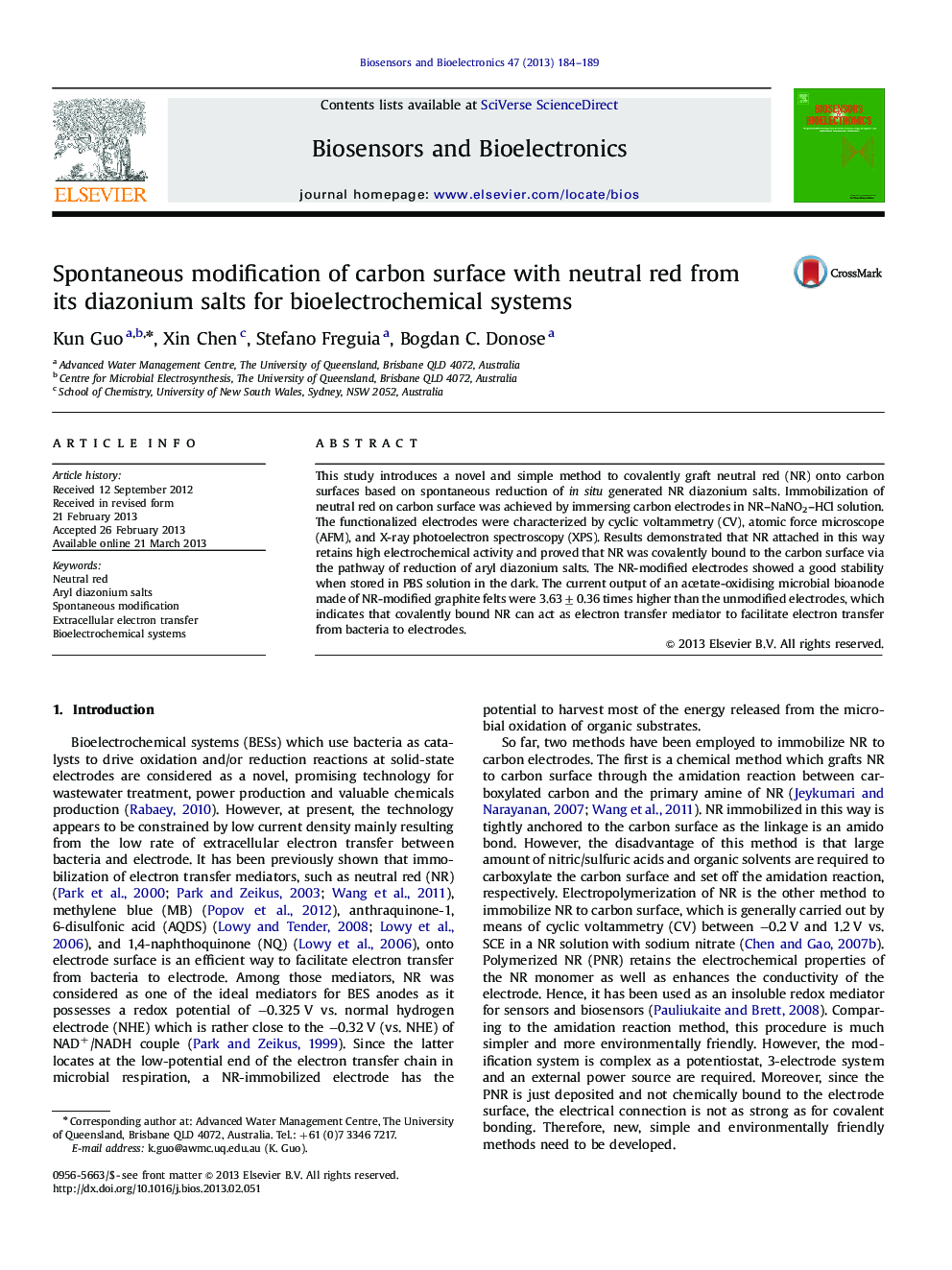| Article ID | Journal | Published Year | Pages | File Type |
|---|---|---|---|---|
| 866958 | Biosensors and Bioelectronics | 2013 | 6 Pages |
•A new and simple method for neutral red (NR) surface modification.•Covalently graft NR onto carbon surfaces was achieved by spontaneous reduction of in situ generated NR diazonium salts.•The NR-modified electrodes showed a good stability when stored in PBS solution in the dark.•The NR-modified electrodes produced 3.63±0.36 times higher current than the unmodified electrodes.
This study introduces a novel and simple method to covalently graft neutral red (NR) onto carbon surfaces based on spontaneous reduction of in situ generated NR diazonium salts. Immobilization of neutral red on carbon surface was achieved by immersing carbon electrodes in NR–NaNO2–HCl solution. The functionalized electrodes were characterized by cyclic voltammetry (CV), atomic force microscope (AFM), and X-ray photoelectron spectroscopy (XPS). Results demonstrated that NR attached in this way retains high electrochemical activity and proved that NR was covalently bound to the carbon surface via the pathway of reduction of aryl diazonium salts. The NR-modified electrodes showed a good stability when stored in PBS solution in the dark. The current output of an acetate-oxidising microbial bioanode made of NR-modified graphite felts were 3.63±0.36 times higher than the unmodified electrodes, which indicates that covalently bound NR can act as electron transfer mediator to facilitate electron transfer from bacteria to electrodes.
